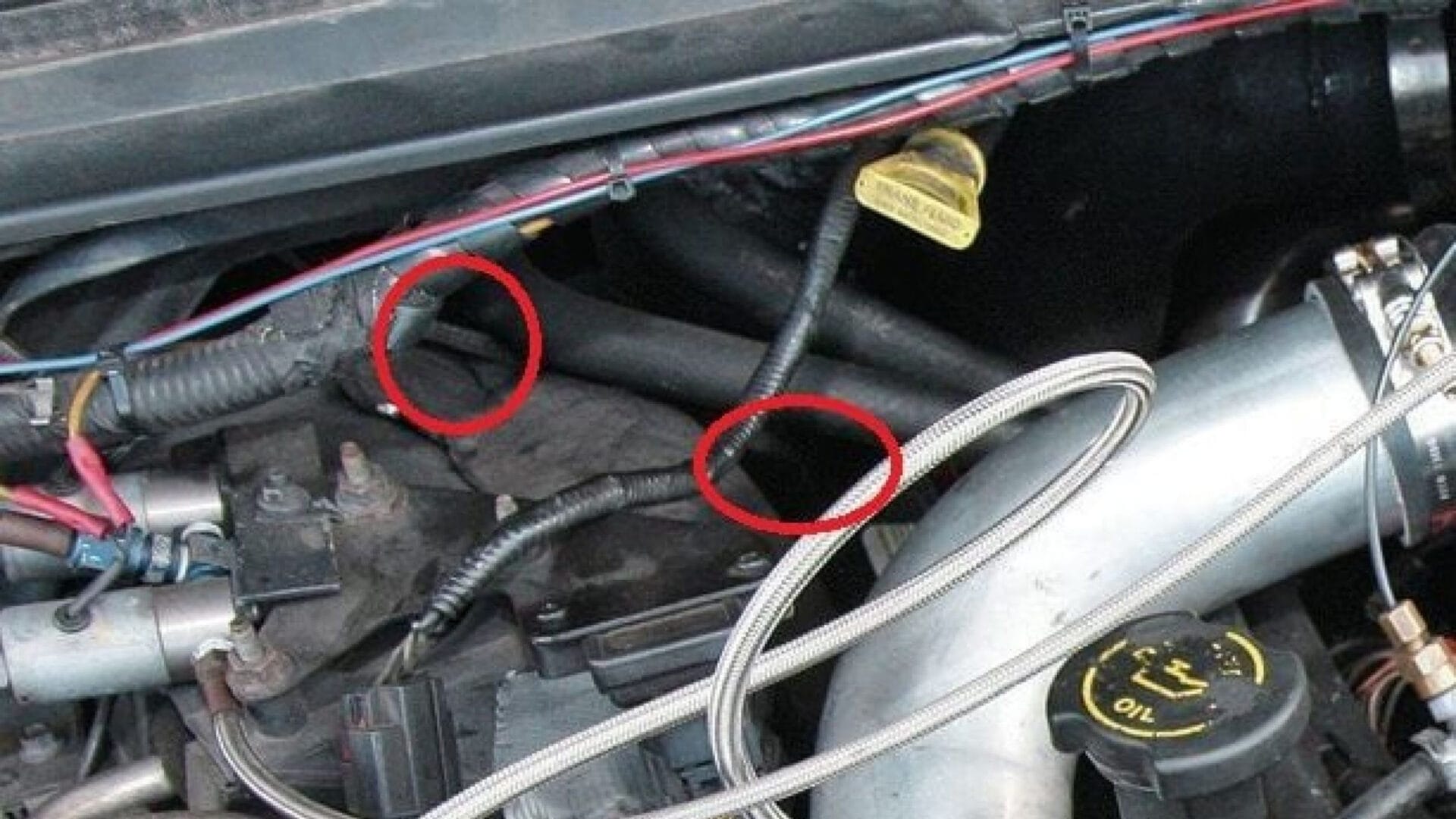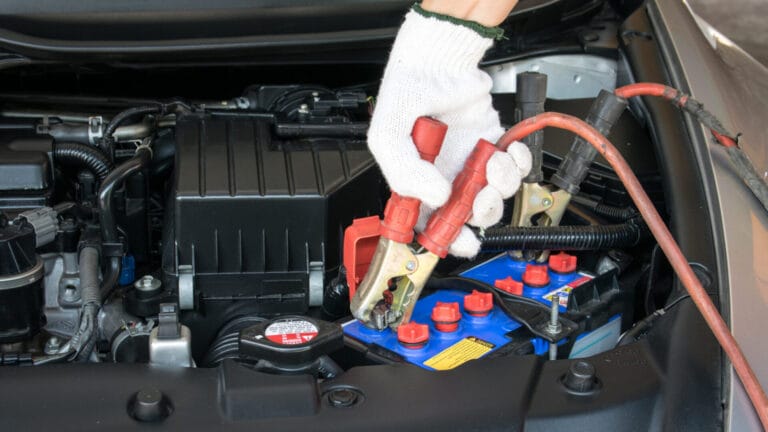How Many Ground Wires Does a Car Have?
When you add a new electric fixture to your vehicle, such as an amp or headlights, you need to ground them properly. Besides, experts suggest you regularly check the ground wires and upgrade them for a smooth ride. And in that case, you need to know how many ground wires does a car have.
Most cars have 1 to 4 large ground wires running from the negative battery terminal to different grounding points on the vehicle. As for the smaller ones, there are 10 to 30 ground wires for every electric device in your vehicle. The number can be higher for more modern vehicles.
You can find the three main heavy-gauge cables under the hood of your car, running along the engine and chassis of your vehicle. Want more details? Let’s dive in!
How Many Ground Wires Does A Car Have?
By ‘ground wire,’ most car owners refer to the large 4-gauge cables typically connected to the engine and main frame of the car. These come from the negative terminal of the battery.

There can be numerous smaller secondary ground wires, depending on the number of electric devices in your vehicle.
You can easily locate the ground wires in your vehicle’s wiring diagram. Here are the details of the ground wires your car has:
Primary Ground Wire 1: Battery to Engine Block
A primary grounding on your vehicle is connected to the negative terminal of the battery, while the other part runs along the engine block. It ensures a proper electrical flow for the starter motor, alternator, and other engine-related components.
In some older vehicles, there is only one primary cable that extends to the chassis or main frame of the car as well. These are usually heavy-duty cables within the range of 2 gauge to 4 gauge.
Primary Ground Wire 2: Battery to Chassis
Another major grounding wire runs from the negative battery terminal to the chassis of the car. It creates a closed loop for the majority of electrical components within your car’s body, including lights, accessories, and control systems. This grounding cable is usually 4-gauge thick.
Primary Ground Wire 3: Battery to Transmission or Frame
While most vehicles have the two above-mentioned primary grinding cables, some modern cars have additional grounding points extending from the car battery to the transmission or parts of the main frame.
These 4- or 8-gauge cables are often used for specific components or to enhance grounding integrity for the increased number of electric parts.
Secondary Grounding Cables
To ensure a steady electric flow to the interior lights, sensors, and other electric fixtures, your car has 10 to 30 (or more in modern vehicles) smaller ground wires.
The number of secondary ground wires in a car depends on its specific design and complexity. Based on the current they need to carry, these wires are thinner, ranging from 6 gauge to 10 gauge.
Do Cars Have Multiple Ground Wires and What Are They Used For?
Yes, cars can have multiple ground wires and they serve different purposes. The ground wires help ensure proper grounding for various electrical components. For instance, the Spark Plug De fouler for O2 Sensor has its own ground wire to ensure accurate readings and performance of the oxygen sensor in the vehicle.
Where Are the Ground Wires Located on My Car?
Whether you’re upgrading your vehicle or inspecting a ground wire for malfunction, you need to locate them first.

The primary heavy-gauge ground wires are typically thick and black with yellow stripes. Follow the steps given below to locate the ground wires in your car:
Step 1: Refer to Your Wiring Diagram
To get the exact locations of all your car’s ground wires, you need to check out your vehicle’s wiring diagram. Visit the manufacturer’s website to get an online version of it. You can also check the user’s manual for your vehicle.
Step 2: Locate the Car Battery
All the ground wires of your car are attached to the battery to form a complete electric pathway. Turn off your car engine and press the gas pedal to drain all the battery charge.
Also, wear protective rubber gloves and shoes to avoid getting electrocuted. Never touch any battery terminal, exposed wires, or related metal parts with your bare hands.
Open your car’s hood, and the battery should be on the right or left side of the engine. If you can’t find it there, check the boot and trunk or refer to your owner’s manual.
Step 3: Identify the Ground Wires
Now, find the negative (-) terminal marked on the battery. Follow the thick black cables connected to this terminal leading to the engine block or car’s chassis or frame.
For other ground wires, pay attention to any areas where electrical components are mounted, as these often have dedicated ground points. Here are some places to look:
- Engine Bay: Some cars have additional ground points near crucial engine components. Look for bare metal parts with bolts or screws where black cables are secured.
- Under the Dash: Inspect the area beneath the dashboard along the metal framework, especially around the driver’s side.
- Trunk Area: If your car has electronic components in the trunk, it might have grounding points in the chassis or body near the rear of the car.
- Wiring Harnesses: Secondary ground wires are often integrated into the wiring harnesses that connect various electrical components.
Step 4: Test with a Multimeter
For more precision and inspection of the wire condition, you can use a multimeter to locate and test the ground wires. First, set the multimeter to continuity mode so that the device will beep when two points are connected by a conductor.
Touch one probe of the multimeter to the bare metal of the car’s chassis as a reference point for the ground. Connect the other probe to different black wires. If the multimeter beeps, you’ve found a fully functioning ground wire.
Is It Okay to Install Additional Ground Wires on a Car?
Installing additional ground wires has some advantages. It will brighten the headlights and taillights and improve starter motor performance.
However, experts suggest against it, as it’s mostly unnecessary and sometimes damaging. In some cases, adding additional ground wires can provide a more direct path for current.
Here are some drawbacks to adding additional ground wires.
Inadequate Supply of Electricity
When you install additional ground wires to a closed and complete electric path, the current is split between the two wires. Although it doesn’t create many problems initially, it often results in a voltage drop when the wires start to wear unevenly.
Hence, the electric components connected to the ground wires don’t receive enough electricity, which in turn affects your car’s performance.
Lack of Any Additional Benefits
Modern cars are already equipped with adequate grounding for their regular electrical needs. Therefore, adding extra wires doesn’t necessarily improve the performance of the electric system in any way. It’s best to add extra ground wires only if you’re adding a new electric device.
Damage to the Electric System
If not done correctly, adding ground wires can create short circuits, damage electrical components, or even start fires. Also, the NHTSA suggests any modifications to your car shouldn’t compromise the original equipment’s compliance with their standards.
Therefore, if you add any ground wires and it impacts the original electric system of the car negatively, it might void your car’s warranty.
FAQs
Now, let’s address some common queries car owners often have regarding the ground wires of a car.
What is the purpose of a ground wire in a car?
The ground wire provides a path for electricity to flow back to the battery. It completes the circuit and allows your car’s electrical components to function smoothly.
Can I run my car on a single ground wire?
No, you can’t run your car on a single wire when there are multiple cables installed by the manufacturer. Without a proper ground connection, electricity can stray onto the car’s metal frame. It creates a serious risk of electrical shock when you touch the frame.
Where is the best place to put a ground wire on a car?
The ground wire should be close to the electric components to which it’s supplying electricity. Choose a metal part free from paint, dirt, debris, or other obstructions that might interrupt the current flow.
Closing Words
As we’ve answered how many ground wires a car has, you now know any modern car can have up to four primary ground wires under the hood. The number of ground wires in a car can vary widely based on its complexity and features.
While one end of the wire is connected to the negative battery terminal, the other is attached to the engine block or car frame. These connections provide ground for electric components such as the engine, lights, sensors, and more. For further details on the wires, check your service manual.





